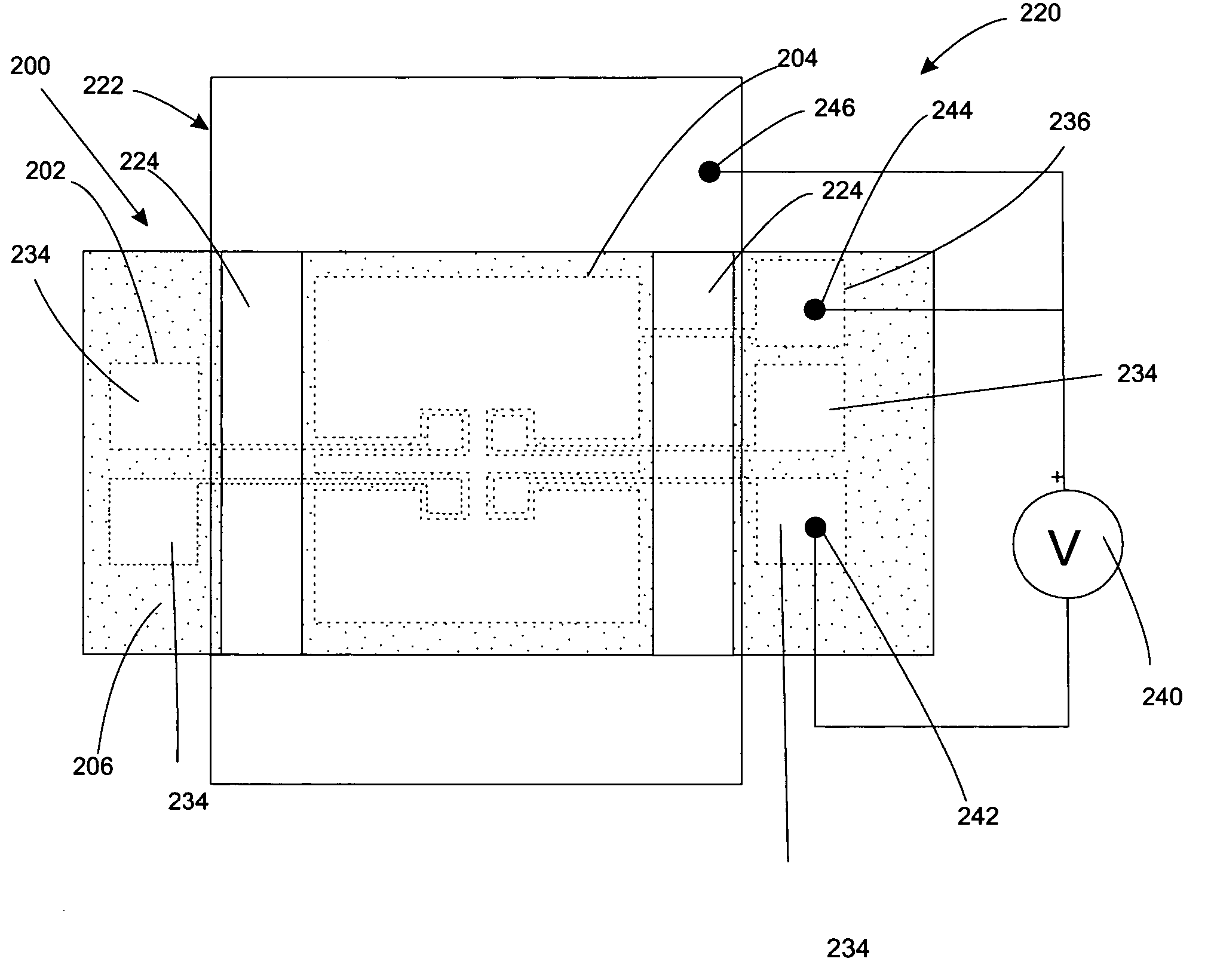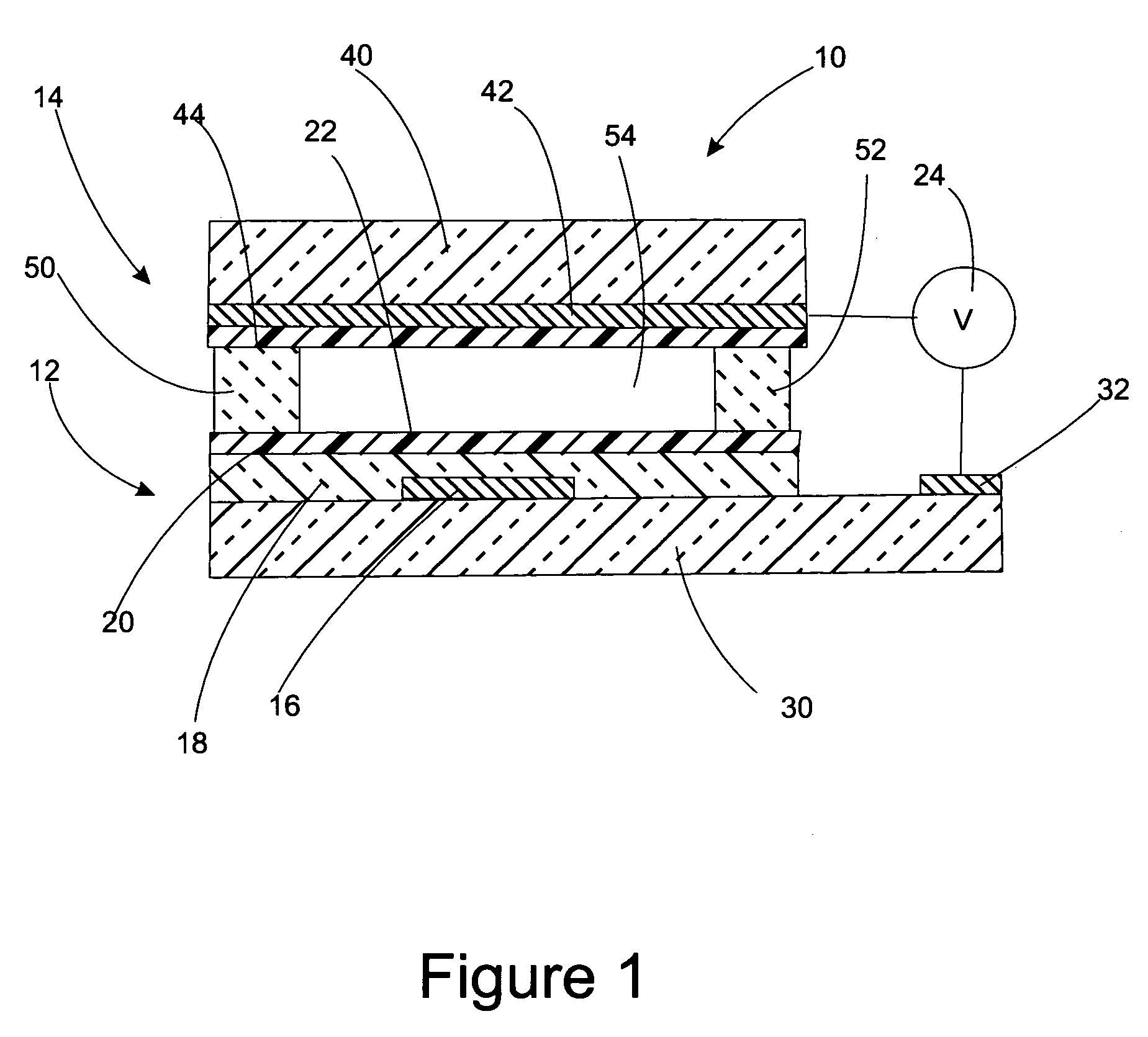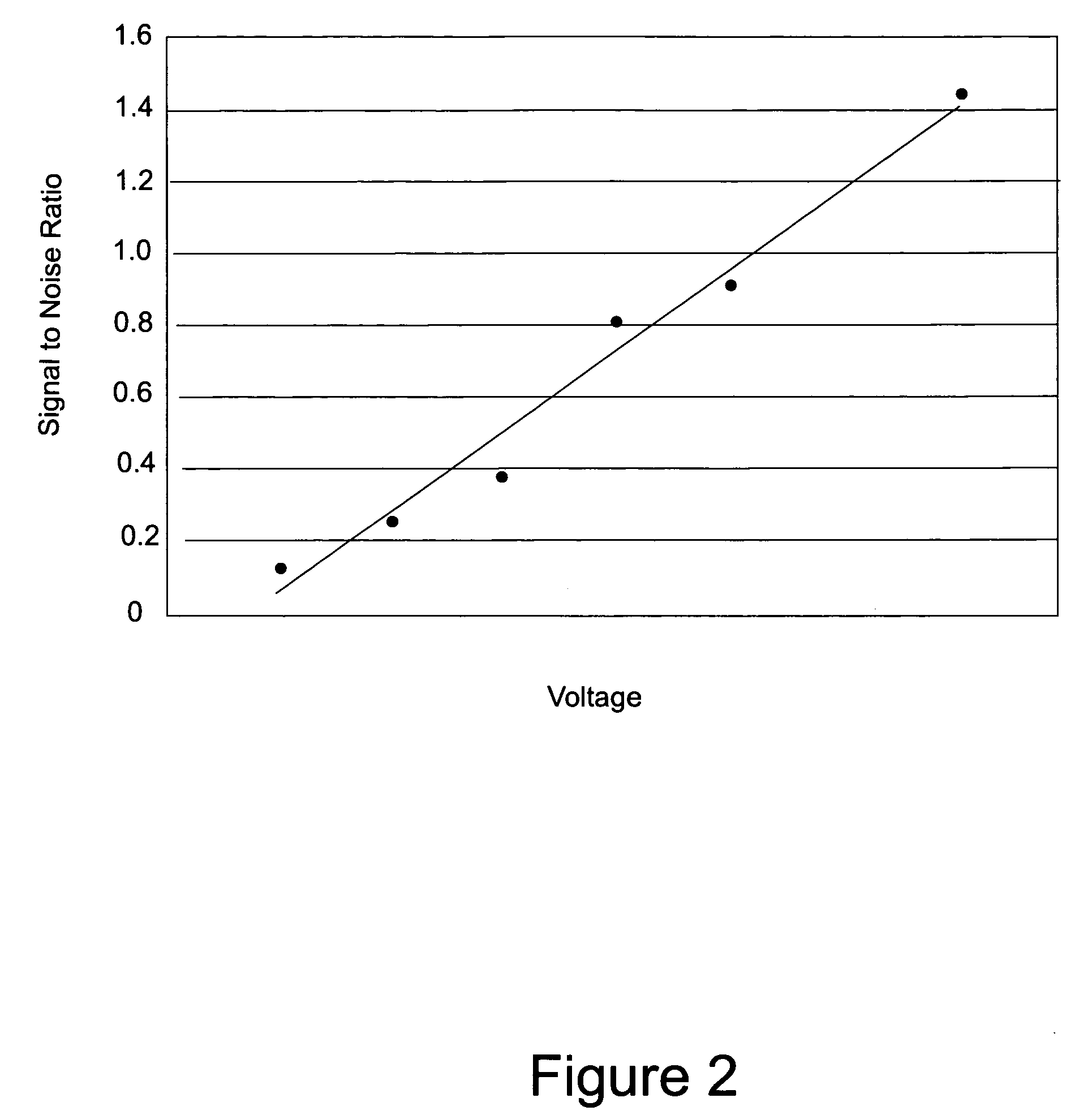Reconfigurable protein patterning using electrowetting microelectrodes
a microelectrode and protein technology, applied in the field of protein patterning, can solve the problems of not being easily reversible, few if any electrical methods exist for immobilizing proteins on the surface, and relatively permanent patterns produced
- Summary
- Abstract
- Description
- Claims
- Application Information
AI Technical Summary
Problems solved by technology
Method used
Image
Examples
Embodiment Construction
)
[0017] Reference will now be made in detail to the presently preferred compositions or embodiments and methods of the invention, which constitute the best modes of practicing the invention presently known to the inventors.
[0018] In one embodiment of the present invention, devices that include at least one surface to which proteins are not substantially adherent are provided. Such surfaces are in general highly hydrophobic and non-polar. The non-adherent nature with respect to any particular protein can be assessed by contacting such a surface with a protein-containing solution, emulsion, or dispersion, removing the composition, and analyzing the surface for bound protein. Analysis can be conducted by standard techniques such as by tagging the protein with a fluorescent dye and monitoring the fluorescence of the surface. Preferably, less than 10% of the protein will adhere to the surface, more preferably less than 5%, and most preferably less than 1%. The surface is then provided w...
PUM
| Property | Measurement | Unit |
|---|---|---|
| thick | aaaaa | aaaaa |
| thick | aaaaa | aaaaa |
| thick | aaaaa | aaaaa |
Abstract
Description
Claims
Application Information
 Login to View More
Login to View More - R&D
- Intellectual Property
- Life Sciences
- Materials
- Tech Scout
- Unparalleled Data Quality
- Higher Quality Content
- 60% Fewer Hallucinations
Browse by: Latest US Patents, China's latest patents, Technical Efficacy Thesaurus, Application Domain, Technology Topic, Popular Technical Reports.
© 2025 PatSnap. All rights reserved.Legal|Privacy policy|Modern Slavery Act Transparency Statement|Sitemap|About US| Contact US: help@patsnap.com



